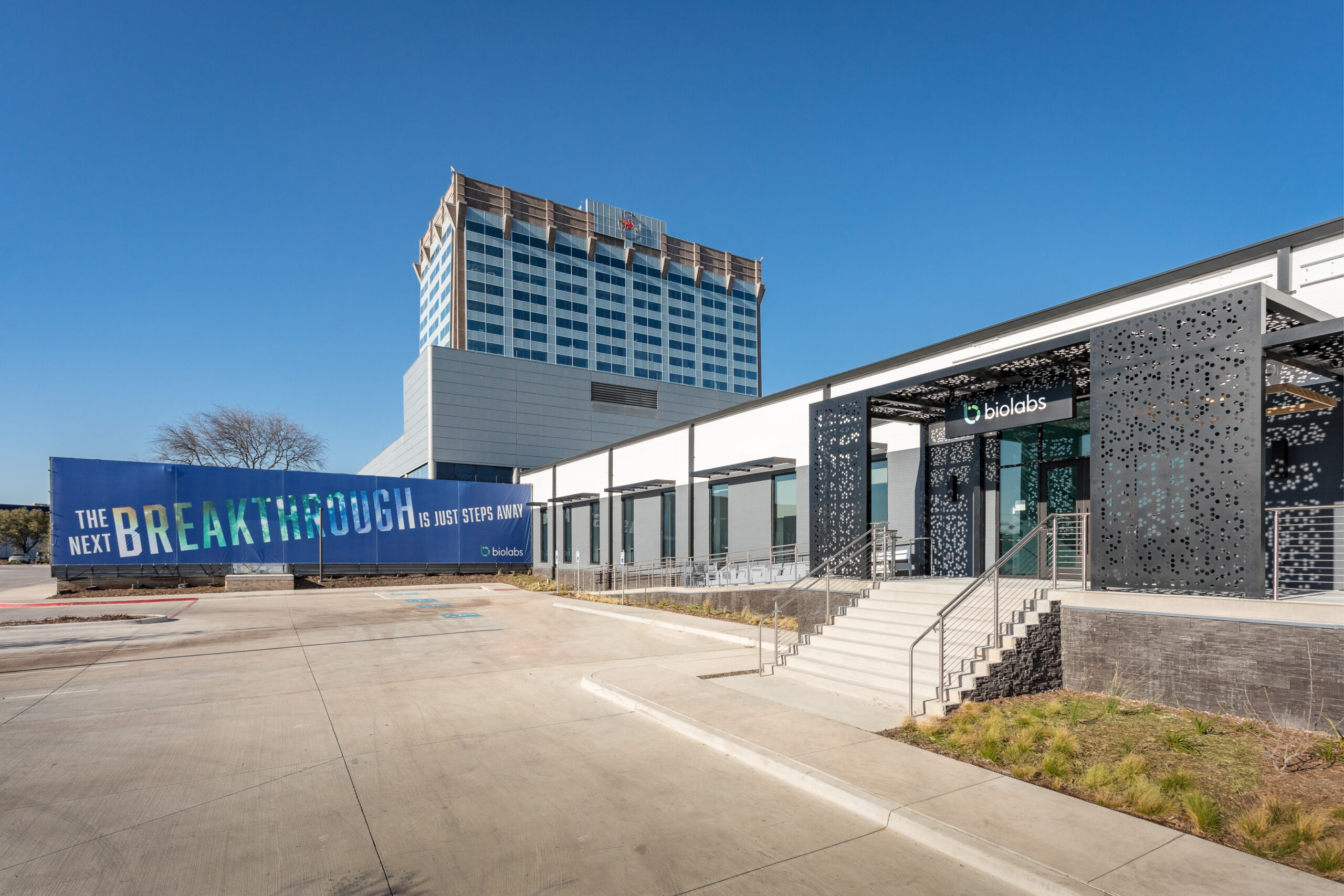
When discussing specialty medication treatment, most people agree that speed-to-therapy is not only important but also a matter of life or death. Patients with complex and often life-threatening conditions can’t afford delays in accessing their essential medications.
Unfortunately, traditional paper-based enrollment processes can impede the journey to therapy. In our current digital age, we must look to technology to revolutionize the medication enrollment experience. But ‘going digital’ is not going far enough. Gone are the days of laborious paperwork, endless back-and-forth communications, and reliance on outdated methods like phone and fax. We must combine digital solutions, a robust ecosystem, automation, and informative insights to create a more efficient path to patient care.

BioLabs Pegasus Park Cultivates Life Science Ecosystem
Gabby Everett, the site director for BioLabs Pegasus Park, offered a tour of the space and shared some examples of why early-stage life science companies should choose North Texas.
Transitioning to digital removes paperwork burden
In most cases, specialty medication enrollment has involved mountains of paperwork. Patients, providers, and pharmacists must navigate unique forms for each drug, often leading to submission errors and delays. Any missing information causes the process to start from the beginning, further slowing medication initiation. And once paperwork is completed, faxing documents to the appropriate party takes time and is error-prone.
So how can we eliminate the paper enrollment form? By leveraging a combination of sophisticated technologies, we can digitize enrollment forms – eliminating the missing information vortex – and axe the fax machine once and for all. Providers and care teams can complete digital “paperwork” in a familiar user-interface, collect patient signatures in-office or via SMS/email, and submit the appropriate documents all in a matter of minutes.
Completing sensitive paperwork digitally is not only more secure – instead of printing documents, signing them, and leaving them in an office space – but it also prevents downstream burden during the all-hands-on-deck blizzard season. With patient information stored within a secure database, providers can initiate re-enrollment workflows for medications or Patient Assistant Programs (PAP) at the click of a button, enabling better preparation for upcoming re-enrollments.

BioLabs Pegasus Park Cultivates Life Science Ecosystem
Gabby Everett, the site director for BioLabs Pegasus Park, offered a tour of the space and shared some examples of why early-stage life science companies should choose North Texas.
The ecosystem matters too
While paperwork can be transformed into digital processes – saving time and reducing errors – the real magic happens when an interconnected network of stakeholders can securely send and receive documents, statuses, and data between one another.
If a provider completes an enrollment form digitally, but the manufacturer is still using fax machines to receive that paperwork, digital efforts are fruitless. And if a provider must leverage various portals to check a patient’s benefit details, PAP eligibility, or pharmacy coverage network, frustration will likely ensue.
In order to create a seamless digital experience, all critical stakeholders – providers, specialty pharmacies, manufacturers, payers, foundations, and field teams – must interconnect and collaborate to improve specialty medication access on behalf of patients. In this way, patients and their care teams can have visibility into medication status, barriers to care, fulfillment options, cost, and more – enabling affordable access to care, in real-time.
Automation: The need for speed
In addition to removing paper forms, phones, and fax machines by transitioning to digital, several steps can be expedited by using automated technologies. Manual tasks that once consumed valuable time and resources can now be efficiently handled by digital systems. Prior authorization (PA) clearance, consent collection, PAP eligibility verification, and other critical processes are streamlined through automation, significantly reducing the time it takes to get patients on specialty medications.
For example, benefit verification and real-time benefit check technologies can confirm insurance eligibility, instantly notifying providers and patients about coverage and out-of-pocket costs. This eliminates the lengthy waits and phone calls that previously accompanied insurance checks. Additionally, automatic triggers can notify stakeholders throughout the enrollment process and accelerate speed-to-therapy. When consent is collected, benefits verification is completed, or PAP is approved – the appropriate person can be notified and support the patient through the next steps of their medication access journey.
Continuous improvement through data and insights
Importantly, all of the previous innovations matter very little if metrics are not appropriately measured.
By gathering, monitoring, and analyzing various data points longitudinally, providers and manufacturers can see what works and what doesn’t. They can measure process efficiencies, identify bottlenecks, and make informed decisions to optimize their workflows. For example, a manufacturer may be able to identify form formatting issues if repeated submission errors occur, or uncover specific steps of the onboarding process that are impeding medication initiation.
In the constantly evolving healthcare landscape, the ability to adapt quickly and efficiently is invaluable. In depth reporting and insights empower stakeholders to implement changes in response to real-world data, leading to improved medication access.
Driving outcomes: Bringing it all together
Innovations in healthcare and technology are reshaping the specialty pharmacy onboarding process, making it more efficient, patient-centric, and manageable. Embracing digital technologies, connected ecosystems, automation, and longitudinal reporting can eliminate paperwork, accelerate processes and provide data-driven insights for continuous improvement.
In an era where timely access to specialty medications can be a matter of life and death, these advancements are not only changing how we enroll patients, but redefining the standard of care in specialty pharmacy. Going beyond digital is no longer an option; it is a necessity for ensuring faster, more efficient patient care.
Photo: MF3d, Getty Images
Julia Regan is the founder and CEO of RxLightning, who offers the first end-to-end, digital platform to improve transparency and facilitate the specialty medication onboarding journey. Prior to launching RxLightning, Julia helped bring the first full scale real-time prescription price transparency solution to the market, which has now become a standard feature in EHRs.












